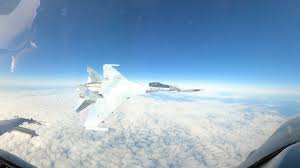Increased Presence of Russian Fighter Jets Near Alaska

The Significance of Russian Fighter Jets near Alaska
The strategic positioning of Alaska has made it a focal point for military activities, particularly concerning the United States and Russia. Recent months have seen an increase in the number of Russian fighter jets entering the airspace near Alaska, prompting a response from U.S. military forces. This uptick in activity raises important questions regarding national security and regional stability.
Details on Recent Incidents
According to reports from the North American Aerospace Defense Command (NORAD), U.S. fighter jets have intercepted Russian aircraft on several occasions in the past few weeks. These incidents have included long-range bombers and multi-role fighter jets flying into the Alaskan Air Defense Identification Zone (ADIZ). The ADIZ is a buffer zone of approximately 200 nautical miles off the coast, where surveillance and control are heightened.
One notable occurrence involved two Russian Tu-95 bombers which were detected and subsequently intercepted by U.S. F-22 Raptors. This incident has been backed by NATO’s increased vigilance in the Arctic region, reflecting growing tensions stemming from geopolitical conflicts.
Implications for National Security
The surge in Russian military flights near Alaska is perceived as a provocative show of force. Analysts suggest that these actions may serve multiple purposes, from testing the reactions of U.S. forces to executing a broader strategy aimed at demonstrating military capabilities in closer proximity to North America.
Military experts emphasize the need for the U.S. to maintain alertness and readiness in response to these incursions. Not only does this represent a challenge for the U.S. Air Force, but it also raises questions about the evolving military landscape in the Arctic, where access is becoming increasingly strategic due to climate change and resource availability.
Future Perspectives
Looking ahead, military analysts predict that the frequency of such incidents will only increase as both Russia and the U.S. fortify their military presences in the Arctic. The changing dynamics of international relations, along with the impact of climate change and emerging trade routes in the region, will likely fuel continued scrutiny of military activities by both nations.
In conclusion, the presence of Russian fighter jets near Alaska is not just a military concern but also a reflection of the ongoing geopolitical tensions. The implications of these actions will resonate through diplomatic, economic, and military channels, making it essential for both nations to engage in dialogue to prevent escalation and ensure stability in this critical region.
